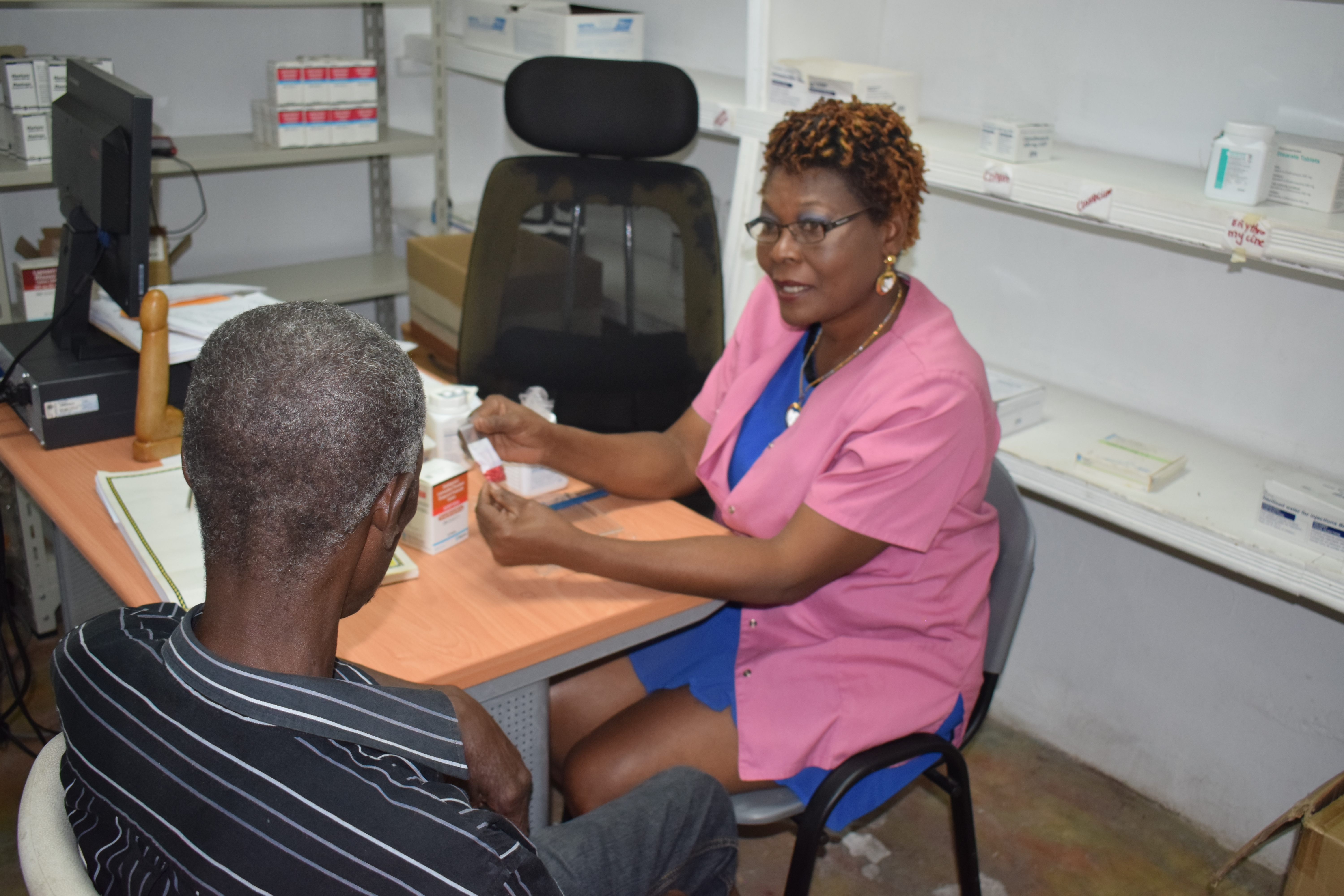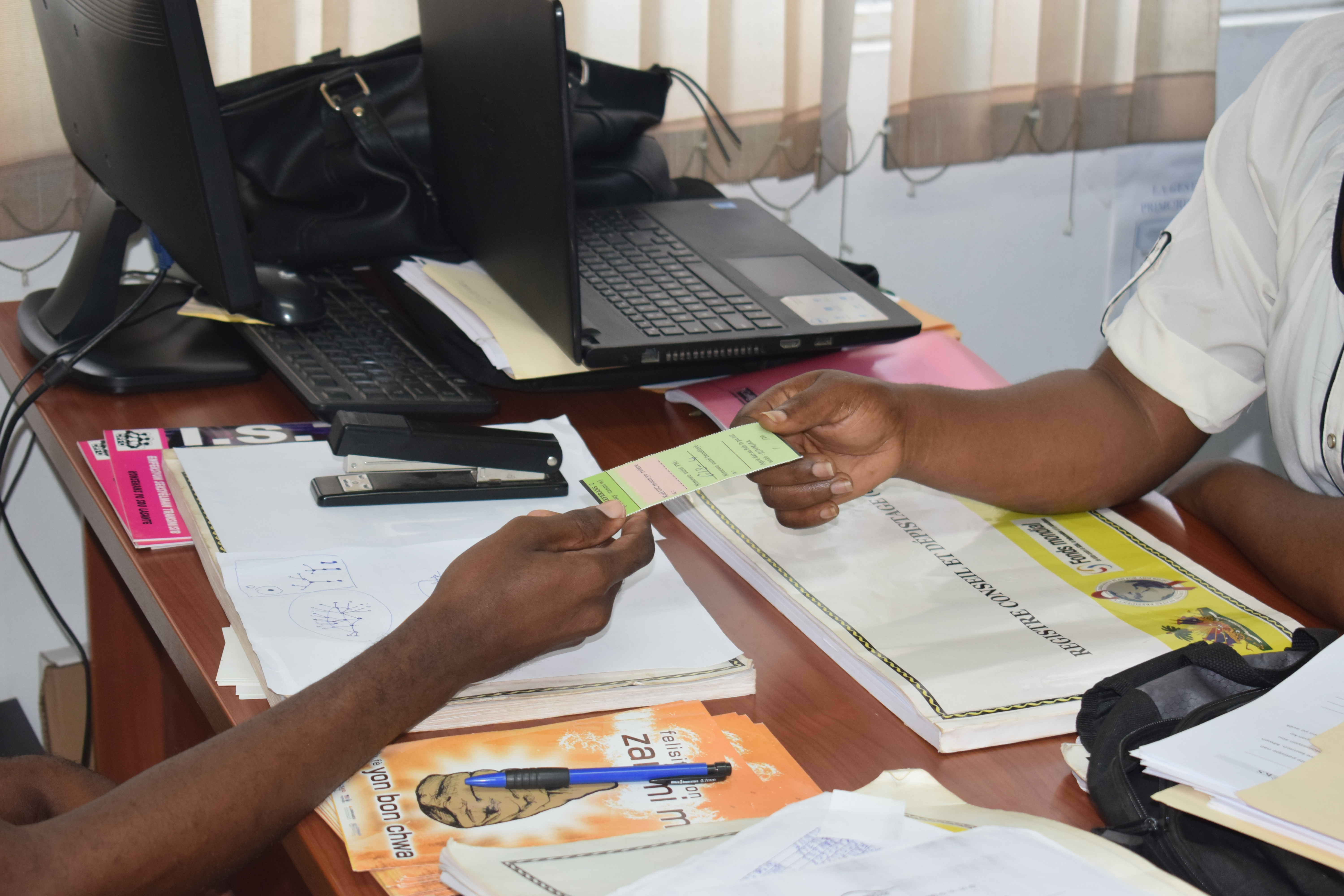Written by Aubrey Weber, Technical Officer, FHI 360
This post is the first in a series on LINKAGES’ country-specific, programmatic success under TOM+ funding and support.

A Clinique J.C. Menard nurse initiates an HIV-positive peer on antiretroviral treatment during an EPOA campaign (Photo: Edma Despagne, LINKAGES Haiti).
Prior to the last quarter of FY18, the USAID- and PEPFAR-supported LINKAGES project in Haiti experienced a range of challenges with regard to case-detection rates, retention on antiretroviral treatment (ART), and viral load testing and suppression among female sex workers (FSWs) and men who have sex with men (MSM). Although outreach activities and peer navigation were implemented with fidelity to best practice, the project continued to look for more efficient and effective ways to improve.
With the recent addition of TOM+ funding, the LINKAGES Haiti team has made significant progress. The TOM+ investment has enabled them to receive technical assistance on implementation of the enhanced peer outreach approach (EPOA). This has helped address the need to expand outreach to key population (KP) members who are harder to reach and who may be at high risk of HIV, or more likely to be HIV-positive.
EPOA is conducted by peer outreach workers and uses performance-based incentives and referral chain networks to reach KP members for HIV testing who may not be reached by traditional peer outreach methods. The goal of EPOA is to increase HIV case detection, link HIV-positive KP members to treatment and care, and connect HIV-negative KP members to services that will help them remain negative.
“I am very happy to help my peers access health care services through EPOA, especially those who have never taken an HIV test in their life and have high-risk behaviors that make them vulnerable.” – Maikelin Francois, peer mobilizer

A peer mobilizer presents a coupon to a counselor at the Centre Promotion des Femmes Ouvrieres (CPFO) clinic for registration before pre-test counseling (Photo: Edma Despagne).
EPOA was first introduced in Haiti in Q4 FY18 at 13 sites. During that quarter, a total of 245 previously undiagnosed KPs living with HIV (163 FSWs and 82 MSM) were identified through this approach. Compared to routine outreach, EPOA has proved to be an effective strategy for improving case finding. Of the total case findings among FSWs in Q4 (190), 70 percent came from EPOA while 30 percent came from regular outreach and testing services. For MSM, 80 percent of the 127 cases identified in Q4 came from EPOA while 20 percent came from routine services.
LINKAGES’ peer outreach workers in Haiti are proud to be part of the success that has come from EPOA.
“When LINKAGES presented EPOA, I said, ‘Wow, my job is not going to be easy, but I have to try! And, believe it or not, my performance improved. Through the peer mobilizers I recruited, hidden and high-risk MSM were reached and brought to the clinic. In addition, my network has grown, and I have new friends. I am so happy with EPOA because it gives us the opportunity to reach those who are deeply in need of health assistance and I was able to be part of that.” – MSM peer educator, SEROvie
Following the introduction of the EPOA strategy, less HIV testing has been conducted, but case finding performance has improved. Implementing partners are now able to reach KP members at high risk who were previously unreachable through other strategies. In the last quarter of FY18, 888 FSWs and 481 MSM were tested for HIV through EPOA and received their results. These represent 40.7 percent of the total HIV tests among FSWs and 27.5 percent of the total HIV tests among MSM during that time period.
In Haiti, EPOA has also improved ART initiation among HIV-positive KPs. 99 percent of FSWs and MSM diagnosed HIV-positive through EPOA were instantly initiated on ART.
“A group of motivated people fully dedicated to achieving a goal is always a source of inspiration for others… Thanks to our consistent efforts to implement EPOA, the site’s performance in case detection and initiation on ART improved. EPOA is the best strategy.” – data reporting officer, FOSREF Cayes
The TOM+-supported technical assistance to introduce EPOA has been catalytic. Following this initial investment, LINKAGES Haiti is now moving forward to scale up EPOA and make it a core program strategy.
*TOM+ stands for Technical Oversight and Management+ and are earmarked funds from OGAC via USAID for the provision of technical assistance to countries implementing HIV programming.
